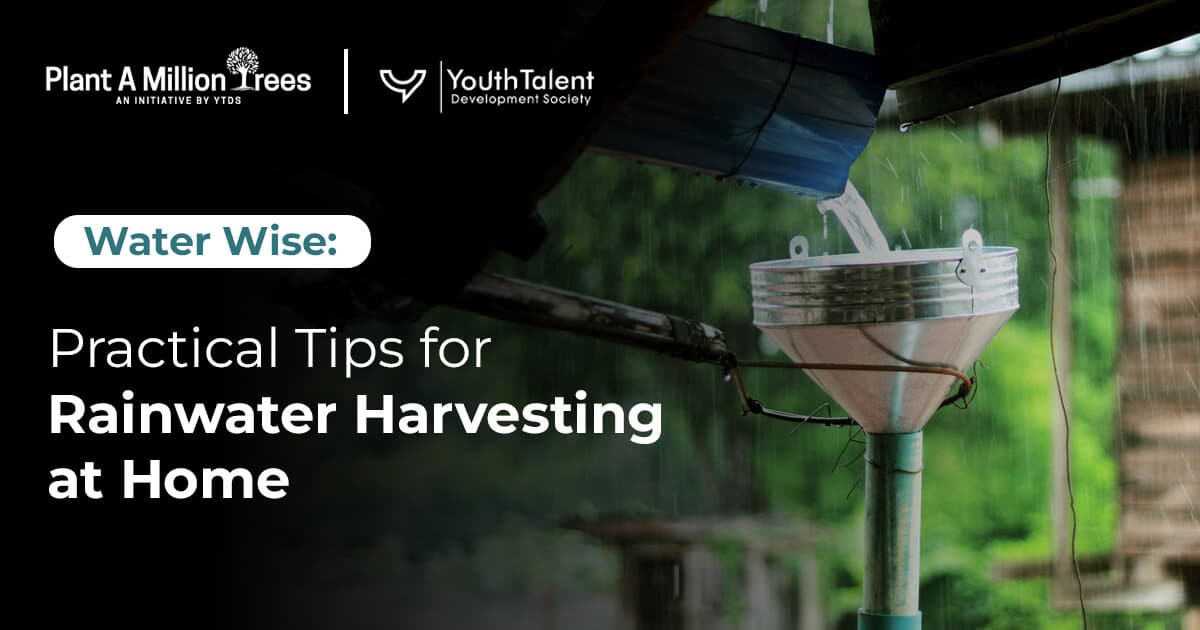At this moment, one of the biggest global challenges is not having enough water. In India, more than 600...
Rainwater harvesting is an excellent practice for conservation, reduction of municipal supply dependence, and sustainable living. Therefore, whether you live in an urban apartment or a house with plenty of outdoor space, the introduction of rainwater harvesting is effective and ecologically sound.
This article gives some indispensable Rainwater Installation Tips that can help the reader get started with home rainwater collection and DIY rainwater systems.
Why Harvest Rainwater?
Before venturing into the methods rainwater harvesting is beneficial for:
Water Conservation –
Reduced dependence on groundwater and municipal water supply. Additionally, integrating tree planting into rainwater harvesting efforts can further enhance water retention in soil, reduce runoff, and improve overall water cycle sustainability.
Trees act as natural sponges, helping to recharge groundwater and prevent soil erosion, making them an excellent companion to rainwater harvesting.
Lower Water Bills –
Minimizes utility charges by using rainwater, which is free and can be used for multiple purposes such as gardening, car washing, and even household chores like flushing toilets or laundry.
Over time, this significantly reduces municipal water dependency and helps homeowners save money on water expenses.
Eco Friendliness –
Reduces surface water runoff that contributes to urban flooding and erosion. By capturing rainwater before it flows into drainage systems, rainwater harvesting also helps recharge groundwater, improves soil moisture, and supports sustainable water cycles in both urban and rural areas.
Better Garden Health –
Provides plants with natural, chlorine-free, mineral-rich water, making it far superior to treated tap water. Rainwater has a balanced pH, which improves soil health, promotes better root growth, and enhances crop yield in home gardens, farms, and greenhouses.
Emergency Water Supply –
Acts as a backup water source during droughts, water restrictions, or supply shortages. Stored rainwater can be a lifesaver in regions prone to seasonal dry spells, ensuring a steady supply for irrigation, hygiene, and essential household needs.
Step-by-Step Guide to DIY Rainwater Harvesting
1. Choose the Right Rainwater Harvesting Method
Your space, budget, and requirements for water usage will determine the method you choose. Here are some of the methods for rainwater harvesting, among the most favored for a small space versus large homes:
- Rain Barrels– For beginners; ultimate in learning methods; a low-investment option.
- Dry System– Rainwater travels directly from the gutters to the storage tank for immediate use.
- Wet System– Underground pipes carry rainwater, pouring it into a cistern for storage.
- Green Roofs– Absorb and filter rainwater while serving as insulating layers.
- Permeable Pavements– Apart from rainwater harvesting, they also naturally allow rainwater to percolate down into underground storage.
2. DIY Rain Barrel Installation: A Beginner’s Guide
A rain barrel is one of the easiest starting points for a DIY rainwater system. To set it up, follow these steps:
- Pick a Spot – Set it under a downspout where the water naturally flows.
- Install a Screen – Keeps out debris and mosquitoes from entering the barrel.
- Install a Spigot – So that water can easily be withdrawn for gardening.
- Overflow System– Hereafter known as the runaway system-Will Take Away Excess Water Safely from Your House.
- Utilize Several Barrels– Many can be connected for more capacity.
3. How to Store & Filter Rainwater for Safe Use
Water quality can be sustained if proper storage and filtration are ensured:
- Opaque Containers – Helps prevent the growth of algae.
- Cleaning – Avoids contamination and enhances efficiency.
- Install First Flush Diverters – Allows the stripping of initial debris-laden rainwater from entering the tank.
- Install Natural Filtration – Imparts sand and charcoal filters to increase purity.
Cost-Effective Rainwater Solutions for Every Home
If you’re on a tight budget, there are many alternate methods to collect and utilize rainwater that will not require costly installations:
- Converted Containers: Old drums and storage tanks converted into rain barrels.
- Homemade Gutter Extensions: Pushes rainwater from rooftops into a storage system.
- Mulching and Swales: Helps store water into gardens without requiring much storage.
- Greywater Integration: Utilize household greywater for landscapes with rainwater.
Rainwater Harvesting Tips for Drought-Prone Areas
Here are some strategies you can follow to maximize rainfall yields in an area of scanty rain:
- Use Multiple Barrels: Connect more barrels try and conserve the highest amount of water.
- Optimize Collection Surfaces: Use smooth and clean surfaces on your roof, and this will also help in increasing the catchment area of your system;
- Smart Use of Rainwater Harvester: Save the collected rainwater for most important activities like watering plants, cleaning, and other household uses;
- Drip Irrigation System: The trickle system is another effective combination of rainwater stored, decreasing wastage and increasing application efficiency;
- Underground Storage: Development of cisterns or underground tank storage is recommended to avoid all evaporation losses.
FAQs: Everything You Need to Know About Rainwater Harvesting
How to build a rainwater harvesting system for my home?
For your home rainwater harvesting system, you can start somewhere simple with a rain barrel, and then scale up with tanks and filtration as per your needs. But ensure proper installation of gutters and collection surfaces. If you can, consider underground storage for more capacity and longevity.
What are the best rainwater harvesting methods for small spaces?
For tight spaces, rain barrels, vertical storage tanks, and even underground cisterns are practically compact solutions. Rooftop collection combined with smart filtration can be other effective options for small urban settings.
Can rainwater harvesting help in drought-prone regions?
Indeed! Efficient collection, storage, and use can greatly decrease reliance on unreliable water supplies. Underground storage, large barrels, and the integration of greywater can be used for improved water availability.
What is the best way to use harvested rainwater?
Water from rainfall is used for gardening, toilets flushing, laundry, and cleaning. Some times, filtration makes it suitable for use for cooking and drinking.
Start Your Rainwater Harvesting Journey Today!
Rainwater harvesting is one of the wonderful techniques of saving water, which adopts conservation and environmental friendliness. Your choosing to save every drop of water, even through a mere Rain Barrel Installation or sophisticated systems, helps in creating a greener future. These Water Conservation Methods should, therefore, be implemented straightaway by you to favor Mother Nature!
By implementing these rainwater harvesting strategies, you’ll not only save water but also contribute to a more sustainable planet!




